CPL One director Sophie Hewitt-Jones reports from this year’s PPA Festival on why it’s good to prioritise quality over quantity.
“The industrial age of magazines is making way for the artisanal age,” said Hearst UK’s CEO, Katie Vanneck-Smith, at the #PPA Festival in London last week, quoting Douglas McCabe, CEO of Enders Analysis.
Here at CPL One we’re evolving many of our specialist publications in a way that chimes with this. We put good journalism and thoughtful design front and centre to ensure that our magazines maintain a relevant and highly valued place in the lives of their readers.
In just the past week, I have been in discussions with at least three different clients who are asking us to reimagine the reader experience and re-examine the purpose of their publications. They want us to help them elevate their magazines to nurture trust and stimulate and strengthen the connection with their audiences – who are often paying members.
They’re asking if we can make their title more special, more focused, more expert and more in-depth. Can it look gorgeous, and be on paper that feels lovely? Can it be digitally remastered? And some of the people we’re talking to are certainly willing and keen to publish less often in order to achieve greater quality of insight and higher production values (with added environmental and financial benefits).
The craft of creating magazines that readers love, keep for reference or pass on to friends, is one to be celebrated. It takes time, thought, editorial and design expertise, and a knowledge of your specialist sector. And this is as true for a technically astute, quarterly professional journal as it is for a luxurious, monthly consumer title.
This ‘less is more’ mantra was heard throughout the day at the #PPAFestival and it is relevant for numerous aspects of the work we do – from the frequency of newsletters or the scheduling of social media posts to how often we distribute a printed publication.
1. Reduce the volume
Post less, print less – in short, make fewer things – but ensure that what you do release into the world is deeper, more expert and done with ever more care and consideration for what your audience will engage with and appreciate.
This can be as true for digital story output as it is for printed publications where less could mean fewer episodes: in short, reduce the frequency but up the quality and enhance the reader experience.
2. Focus on what makes you special and expert
People will value – and may be prepared to pay for – information, inspiration and knowledge that they can’t get anywhere else. And when that’s created by people who are at the top of their game when it comes to knowing their stuff, even better. For membership bodies, often operating in a niche sector, this is second nature. However, we still need to ensure that we really shine the spotlight on the unique, celebrate the expert, and highlight the specialist know-how that can’t be freely accessed via a quick Google search.
3. Understand and own your community
Again, for a professional institution, or trade association, this should be obvious and ‘easy’. But it’s surprising how often we hear that organisations don’t know nearly as much as they would like to about their paying members. Loyalty is not a given, and data gets you only so far; it is the deep knowledge of what keeps them awake at night, what helps them do their jobs better, and why they get out of bed in the morning: that is the insight we really need to craft highly valued magazines.
We’ll take inspiration from being in what Enders Analysis has described as “the era of artisan print magazines”, and strive for more craft and care rather than fall into the trap of just relentlessly feeding a production line of mediocre content. I look forward to encouraging our teams, contributors and clients to do the same.




